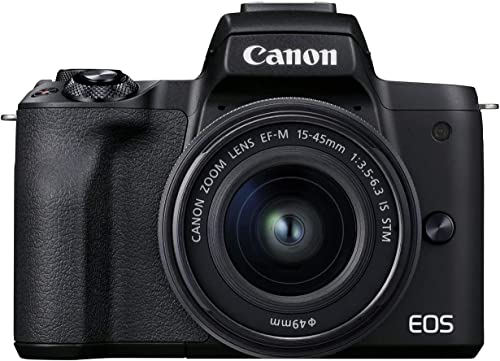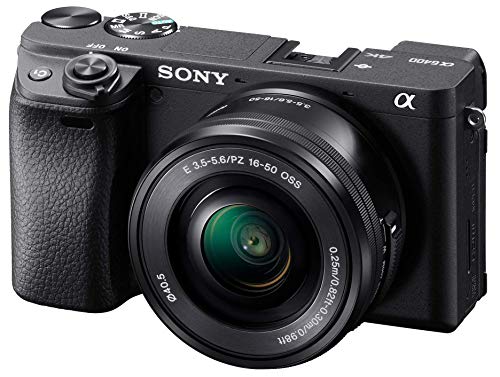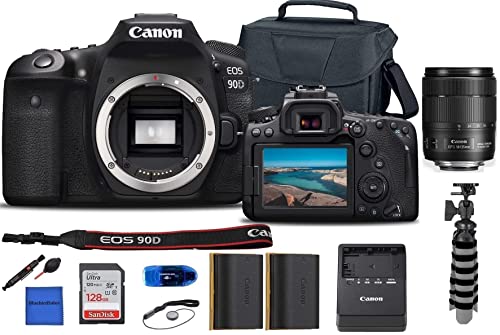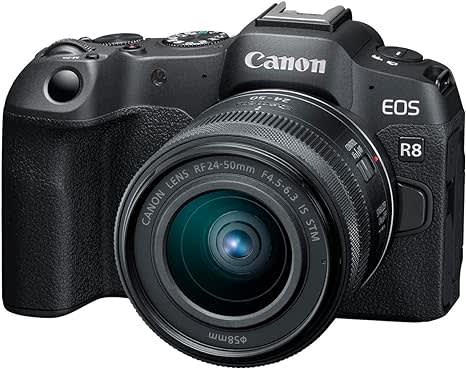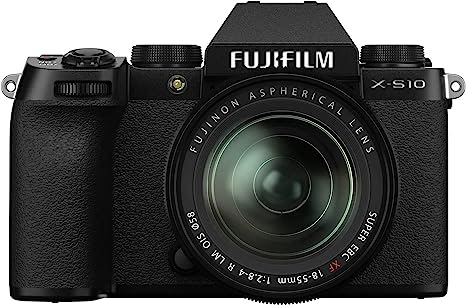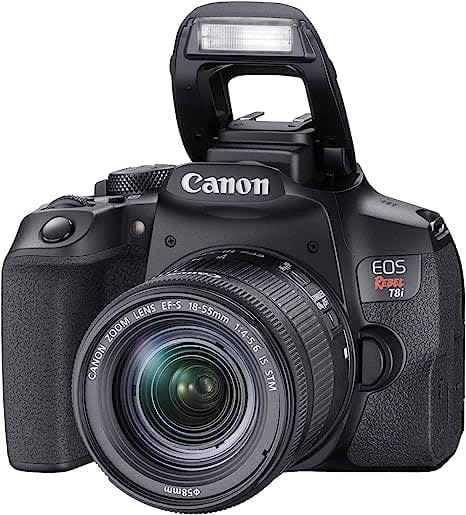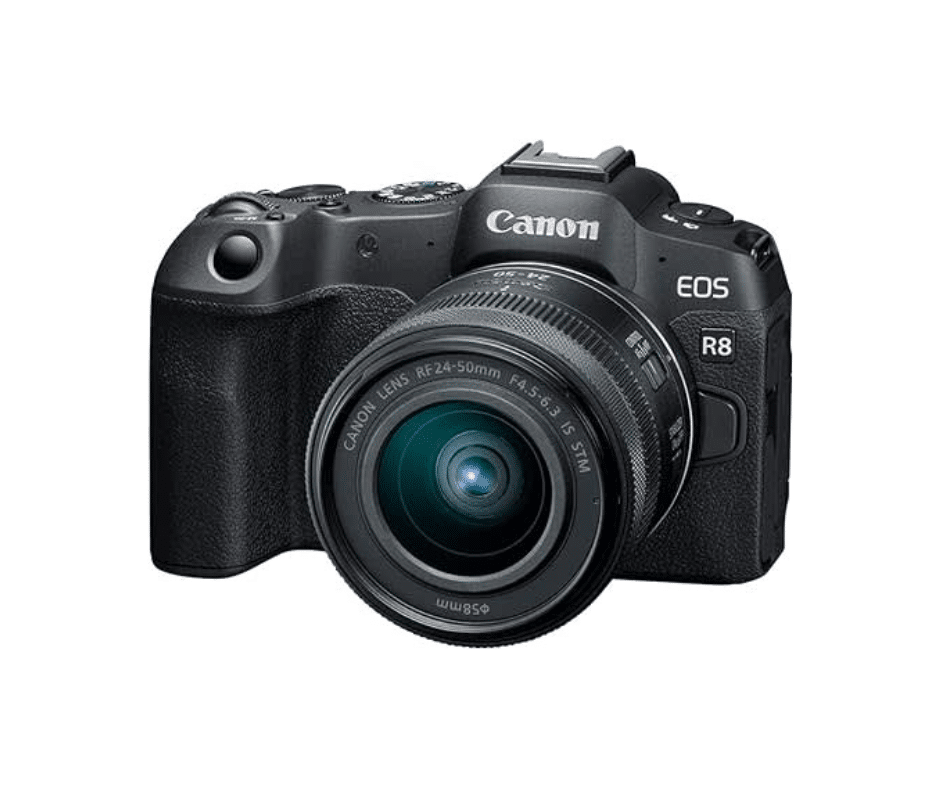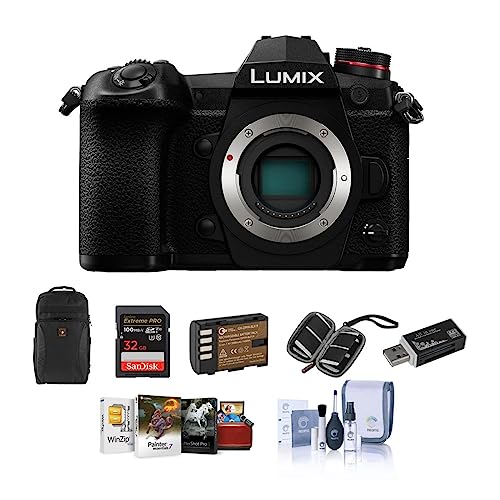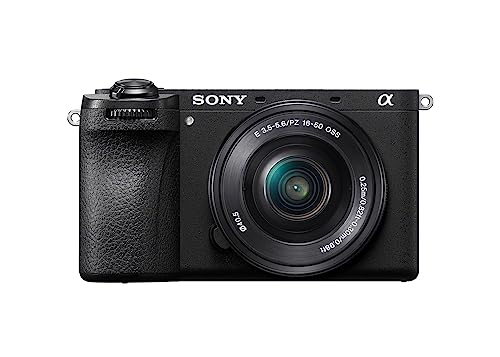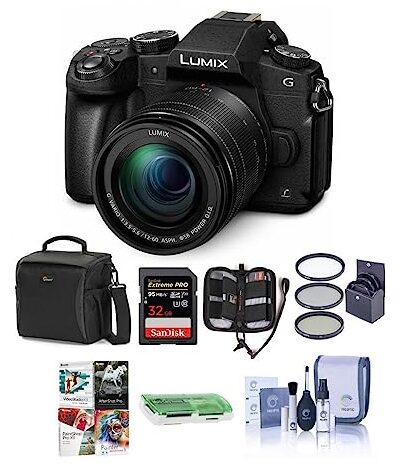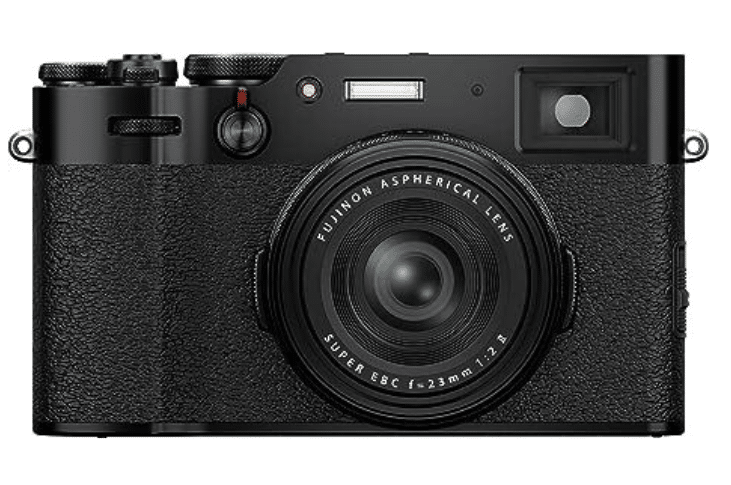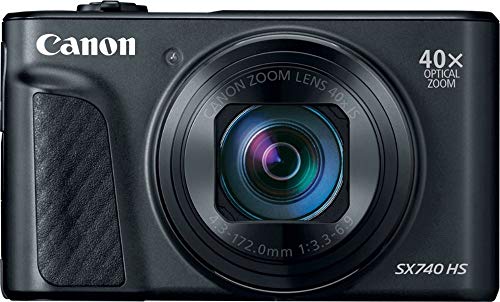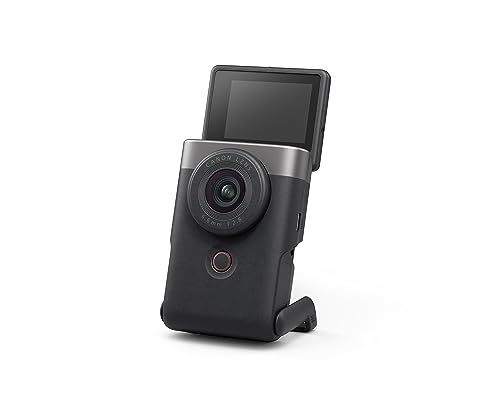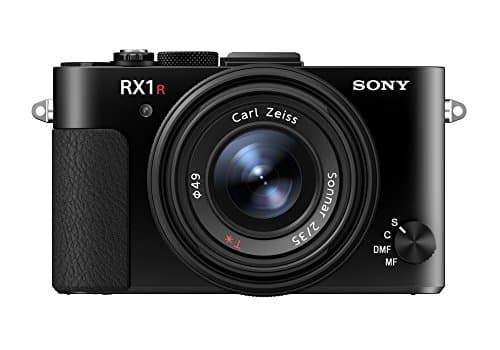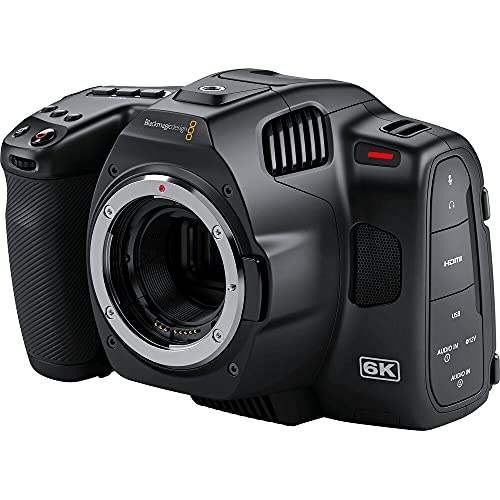[ If you buy gear from one of our links, we may make a commission at no cost to you. Thanks for supporting the blog—we appreciate you! Learn more. ]
What Is the Best Camera for Beginners?
Written by Colette Nichol, Solo Filmmaker and Story Strategist
The best camera for beginners depends on whether you’re primarily interested in photography, video, or equally interested in both.
In my opinion, the best camera for beginners is a crop-sensor DSLR (Digital Single Lens Reflex) camera or mirrorless camera with a standard zoom kit lens. For entry-level APS-C cameras a standard zoom will have a focal length of 17-55mm or similar.
For kids, you might want to purchase a compact camera that has a built-in zoom lens as they’re easier to use and cost less. However, for adults who have a strong interest in capturing creative photos or making videos, a camera with an interchangeable lens mount is essential because it allows you to grow.
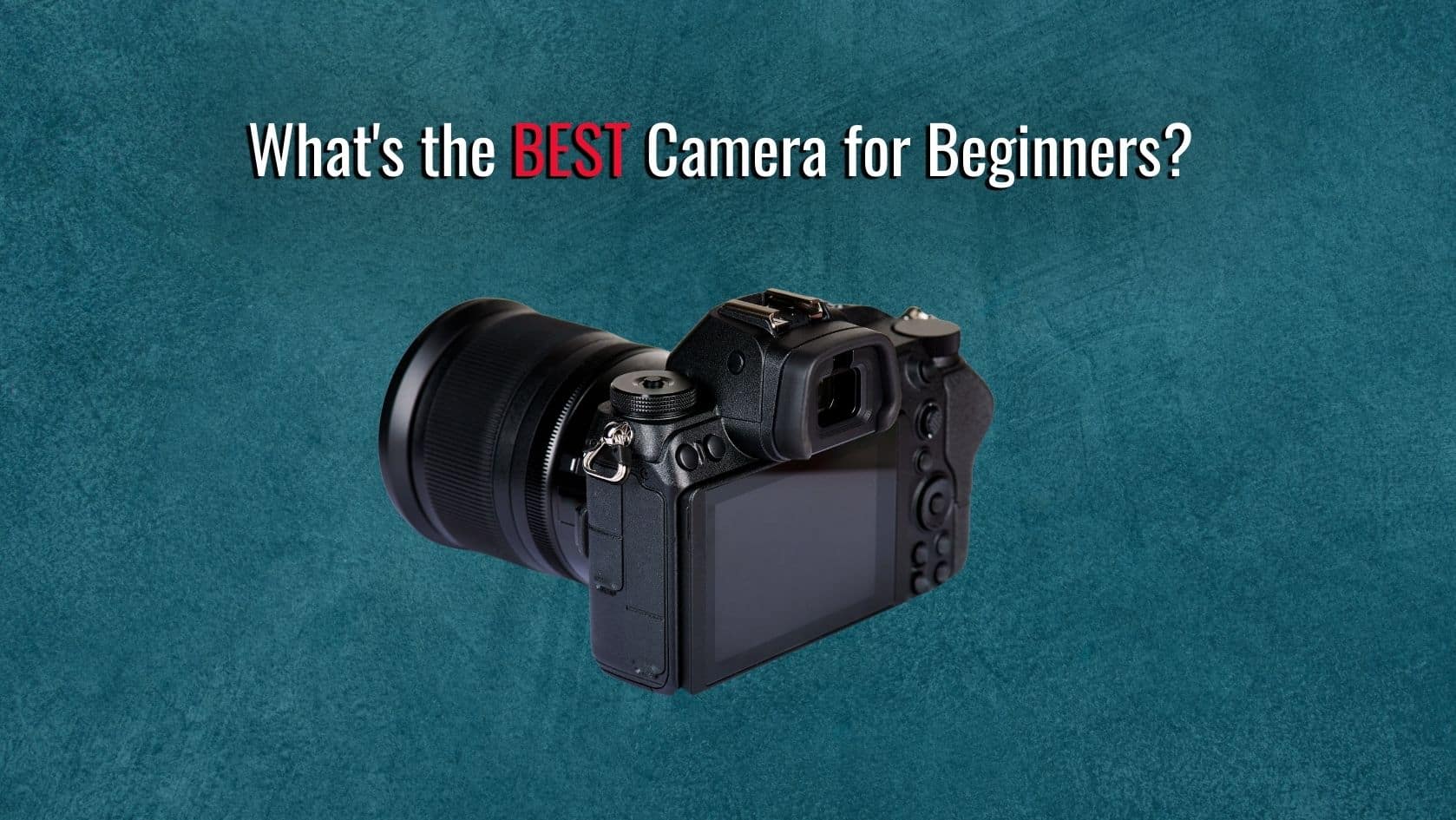
But First…
Before you dash off to Amazon, let’s dig into the truth about buying your first camera so you don’t end up wasting your money.
You don’t want to buy the wrong camera. So I’ve got some tips and suggestions for you. Plus, I’ll cover all the top cameras that are best for beginners, whether you want to focus on growing your video or photography skills.
To start shopping asap, check out these four cameras that are under US $1000. But if you want more info, read through this post to learn everything you need to know to buy the right camera!
4 Best Cameras for Beginners under $1000 | |||
Great Starter Camera for Photography | Best for Handheld Video Shooters | Best for High Quality Video & Photos | Best for Action Video Shooters & Vloggers |
For photographers who want an OPTICAL viewfinder when framing, this DSLR is best. Add to that 5-AXIS stabilization in video mode, continuous auto focus, and 4k at 24 fps. With the kit lens it comes in at under $900. | For video shooters who want to shoot without a tripod, monopod, or shoulder rig, this is a good camera as it provides 5-AXIS stabilization in video mode. You'll get 4k at 23.98 fps and 1080p at up to 59.94 fps. With the kit lens is under $700. | For photographers and video shooters, this camera is good in low light. For video, you get 120 fps at 1080p and 4k at 60 fps, superior COLOUR SCIENCE (10-bit), and a micro-HDMI output for under $800 with the kit lens. | You'll get EYE AUTO FOCUS with this camera to help you capture moving subjects in video/photo. You also get 120 fps at 1080p and a micro-HDMI output. Under $1000 with the kit lens. |
*Many old-school photographers and analogue lovers prefer to use an optical viewfinder because it means you’re looking through the viewfinder at the REAL world. The electrical viewfinders (EVF) that you find on mirrorless cameras means you’re looking at a digital replication of the real world when viewing through the eye piece.
My very first “proper” camera was a Canon Rebel T3i.
It was a low-budget DSLR that captured decent photos and videos.
And I dragged that thing with me everywhere! It was the perfect purchase. Not because it was the perfect camera, but because it was the right style of camera for what I wanted to do.
The most important decision for you to make is what style of camera you want to use based on the following:
1) What you want to create.
2) Your preferences about camera weight and size.
3) Whether you like technology that has a more analogue or digital feeling in terms of dials, knobs, and menus.
4) Your aesthetic concerns: what you want your straight-out-of-camera imagery to look like.
From there, it’s simple to choose a camera and get started!
TABLE OF CONTENTS
- Under $1000: Best All Around Camera for Beginners
- DSLRs versus Mirrorless Cameras
- Best Cameras for Photography vs. Video
- Best Beginner Camera Brand for Photography and Video
- Best Mirrorless Cameras for Beginners
- Best DSLR Cameras for Beginners
- Best Beginner Cameras for Video Creators
- Understanding the Different Digital Cameras for Beginners
- Which Tech Specs Matter for Starter Cameras
- How Do We Decide What’s the Best Camera for Beginners?
- Best Compact Cameras for Beginners
- Best Cinema Camera for Beginners
- Best Vlogging Camera for Beginners
- Best Cameras for Film Students
- Best Beginner Camera for Low-Light Video
- Major Problems (and Tips) that Beginner’s Should Know
- Navigating Camera Settings as a New Photographer or Video Shooter
- Take the Quiz!
But can’t you just tell me what the absolute best starter camera is!?!
For beginner photography or video enthusiasts, the best camera is typically an entry-level DSLR or mirrorless camera with a kit lens.
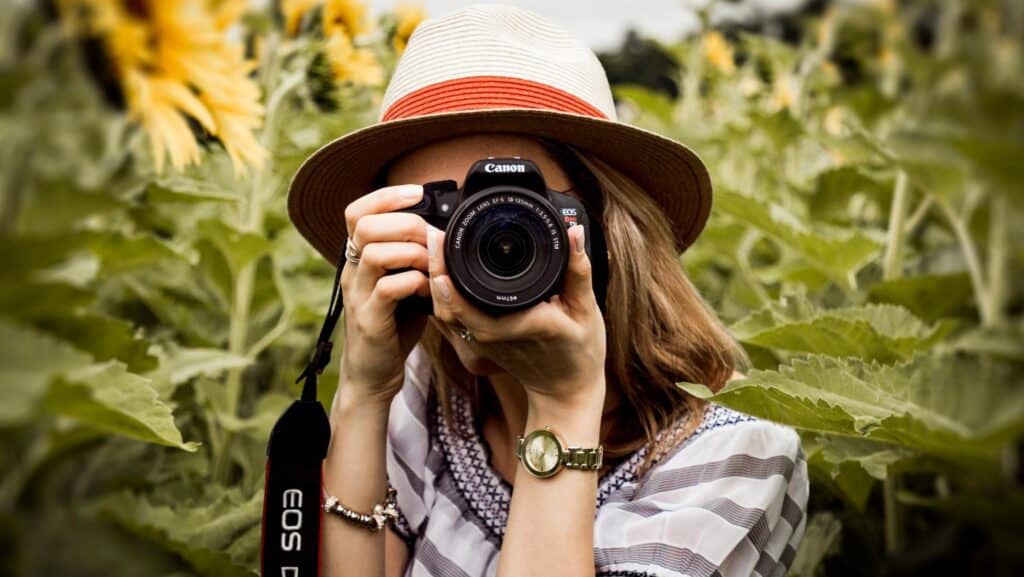
When you buy a DSLR or mirrorless with an interchangeable lens*, it gives you room to grow and exercise your creativity.
If you want a DSLR, the Canon 90D with the kit lens is an excellent beginner camera. For a lower cost option the Canon Rebel T8i is a very good option for both photography and video.
While if you want a mirrorless camera that’s smaller and more lightweight, the Canon R50 provides outstanding value for money and is great for those focused on quality imagery. While the Canon M50 is a perfect starter camera for run-and-gun video shooter who mostly want to shoot handheld (no tripod, monopod, gimbal, etc).
If you prefer Sony, then I recommend the Sony a6400 or the Sony a6700. They are both good mirrorless cameras that will be perfect for a beginner. The Sony a6400 is the ideal choice for vloggers due to way the screen is designed as well as the eye auto focus tracking.
But don’t worry, I’m going to go over all these cameras below. So you can figure out which is best for you.
*An interchangeable lens means you can take the lens on and off the camera and swap out different lenses depending on what you want to shoot.
📖 Related Post: What Is a Mirrorless Camera?
Under $1000: Best All Around Camera for Beginners
Canon Rebel T8i with Kit Lens
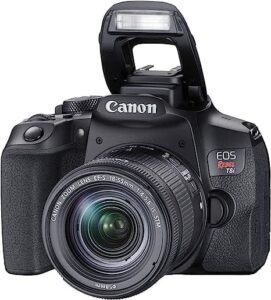
WHY WE LIKE IT:
This is a great camera for both photo and video enthusiast who want to either improve their image quality or get started with a quality product. This camera has solid auto focus which is great for ensuring your videos aren’t totally out of focus. And the continuous autofocus helps beginners to track and capture moving subjects more effectively. This camera will give you the classic beautiful skin tones that Canon is known for. And, the optical viewfinder means you’ll be looking at the real world while framing, not a screen, which is typically easier on the eyes. It comes in at under $1000 with the kit lens.
DOWNSIDES:
If your main focus is shooting action videos, this camera does provide 5-Axis Stabilization in video mode. However, for slow motion, you’ll need to shoot in 1080p at 60 fps. It does, however, offer 4k video at up to 30 fps. If you need to capture great images in low-light, you’ll want to get a faster lens like the Canon 17-55mm f/2.8.
WHO IT’S FOR:
This camera is for beginner photographers and video creators who want a 4k camera with analogue-feeling buttons and dials and 5-axis stabilization. If you want a live viewfinder where you can actually frame up your image while looking at the real world rather than a digital image, this is for you.
CHECK BEST PRICE ➩
4 Best Cameras for Beginners under $2000 | |||
Great Starter DSLR Camera for Photo & Video | Best for Getting into Full Frame & Filmmaking | Best for Action Video Shooters & Vloggers | Best for Walkaround Photography and Video |
The number one reason to buy the only DSLR on this list is if you love being able to use an optical viewfinder. You'll also get 4k video at up to 30 fps and 1080p at up to 100 fps, and solid continuous auto focus. With the kit lens, it comes in under $1600 | If you want to get started shooting with a full frame camera (no crop) that will allow you to easily get nice blurry backgrounds and cinematic footage, this is for you. You get 5-axis stabilization and internal 4:2:2 10-bit video. Plus 4k at up to 60 fps and 1080p at up to 180fps. For under $1600. | This camera is a spec machine. Great in low light. 4k at 120 fps. 4:2:2 at 10-bit colour in 4k video. You also get in-body stabilization, eye autofocus tracking, and a micro HDMI output. With the kit lens it comes in at under $1500. | Made to be the perfect walkaround camera for photography and video, you get 5-axis stabilization in photo and video. For video, you'll get internal 4:2:0 8-bit in 4k and 4:2:2 10-Bit via HDMI. Plus FUJIFILM's legendary colour science and colour profiles. With the kit lens it comes in under $1400. |
SUMMARY: The Sony a6700 has the best objective specs of all four cameras, so why would you choose any other option? The Canon R8 has arguably better in-camera colour - their skintone rendering is superior - with specs that are nearly as good. Likewise the colour science coming from FUJIFILM is exemplary. Canon cameras tend to be more intuitive to use. | |||
But wait…what TYPE of camera do you want?
But before you make any firm decisions and spend your hard-earned cash on one of these cameras, let’s figure out what TYPE of camera you want and go over a few important considerations. Then, I’ll break down the specs for each camera and who it’s suited for so you can easily make the right choice.
DSLRs versus Mirrorless Cameras

Analogue Feel & Regular Viewfinder
Generally speaking, people who prefer DSLRs put a priority on being able to look through the viewfinder and see the real world rather than a digital image.
People who prefer DSLRs also tend to have a preference towards analogue-feeling technology and easy-to-use dials and buttons. DSLR users also typically have a strong desire to capture high-quality imagery and have control over the image creation process even if it means using heavier camera gear.
Digital Feel & Electronic Viewfinder
People who prefer mirrorless cameras typically don’t mind using EVF, which allows you to see a digital image when you look through the viewfinder of the camera.
They also typically place camera size, weight and convenience as a top priority.
In-Body Stabilization
In addition, if you need in-body stabilization because you plan on doing a lot of run-and-gun style handheld video shooting then you’ll want to get a mirrorless camera that’s stabilized or rig out an iPhone pro.
For entry-level cameras under $1000 the Canon Rebel T8i and the Canon M50 both have 5-axis stabilization in video mode.
For 5-axis stabilization in photo and video mode, you’ll need to go a step up in price range. The Sony a6700 and the Canon R8 both have 5-axis stabilization in photo and video.
That said, if you’re just starting out creating videos, you should definitely learn how to use a tripod or monopod. And if you’re focused on photography, this really isn’t a deal breaker as it’s not strictly necessary.
In-body stabilization shouldn’t be a deal breaker for most people who are starting out unless you’re primarily shooting handheld video.
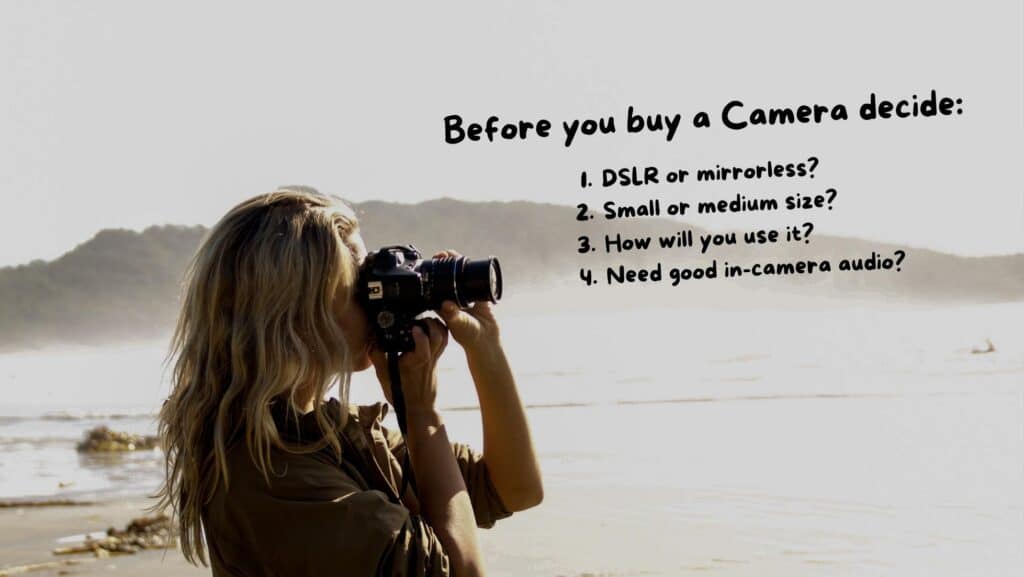
Best Cameras for Photography vs. Video
Do you need the best camera for photography or for video?
One of the reasons it’s important to know if you’re more interested in photography or video is that the two art forms have different requirements.
While there are plenty of hybrid cameras that can be used for both photography and video, it’s important to note that many cameras that are positioned as “good for both” are actually not. They usually skew towards being way better at either photography or video, not both.
Then within the realm of video, there are cameras that are best for vlogging, cameras that are best for making crew-based films, and still other cameras that are best for solo filmmaking and videomaking.
And that’s just the tip of the camera iceberg!
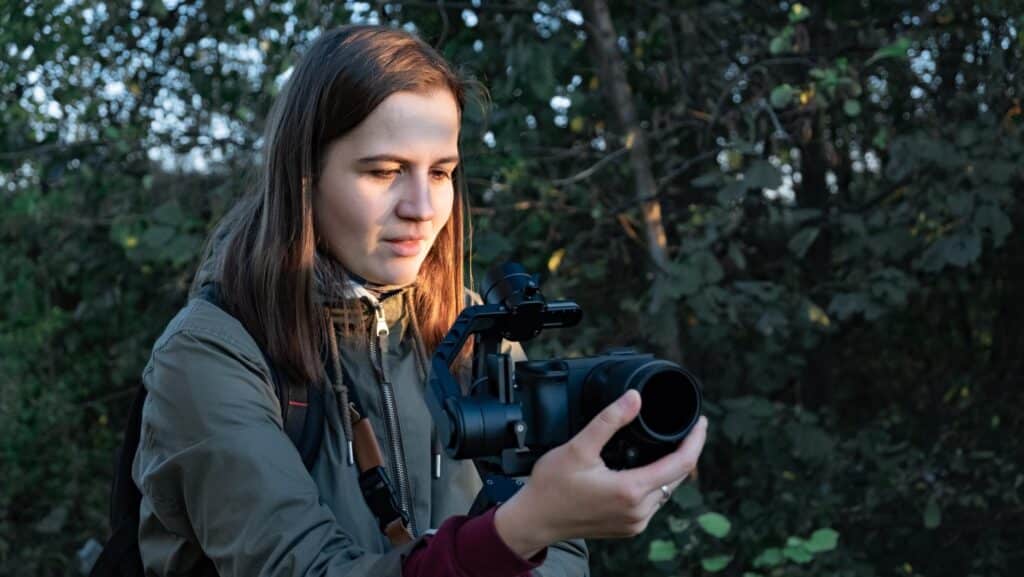
So it’s no wonder that most people get pretty confused when trying to figure out what camera to buy when getting started.
If you’re interested in photography and video, then the three best cameras for you to consider are the Canon 90d (DSLR), the Canon R8 (mirrorless)and the Sony a6700 (mirrorless).
Pick the 90D if you want to have a proper old-school viewfinder where you can look through the viewfinder and see the real world. Go with the R8 if you want something smaller and lighter with 5-axis stabilization and the easy and intuitive Canon interface. Both Canon cameras will give you the classic great in-camera skin tones that Canon users are used to having.
But pick Sony if you want to be able to do run-and-gun handheld without very little camera shake, shoot action sequences with more powerful continuous focus tracking, and obtain 10-bit 4:2:2 internal video recording at up to 120 fps.
Top Pick: Canon EOS R8 Mirrorless Camera | |
Best for Cinematic Video Shooters and Creative Photographers | |
Sensor Size: 24.2MP, Full Frame | Mount: RF | 5-Axis IBIS for Video | |
What We Love: ✓ All the specs you need to get started with ambitious photography or video ✓ Full-frame allows for easier shallow depth of field (blurry backgrounds) ✓ 11.5 stops dynamic range at ISO 100 makes it easier to shoot in bright sunlight without losing detail in the sky ✓ 10-bit video and 14-bit photos give beautiful colour indoors and outdoors ✓ Up to 120 minutes of continuous shooting time ✓ Shoot in 4k at up to 59.94 fps for solid slow motion shots ✓ Shoot extreme slow motion at 1080p with 180 fps ✓ Up to 40 continuous photos i.e. advanced burst shooting for wildlife and sports ✓ Dual Pixel CMOS AF II system recognizes people, animals and cars for autofocus tracking ✓ Mini-HDMI port in case you want to add an external monitor ✓ 3.5mm microphone input and 3.5mm headphone output ✓ Eye detection autofocus for capturing moving subjects - stills and videos ✓ Pro quality for under $1300 body only and under $1600 with the kit lens | Downsides: ✘ If we want to be picky, we could say that 120 fps at 4k would have been nice. ✘ One downside is that the kit lens isn't the greatest quality. But that's normal for a kit lens across all brands. You'll upgrade when you're ready. ✘ You can't record internally to your SD card and externally via HDMI at the same time. ✘ There are some complaints online about the camera turning off because of overheating when using it on HOT days for a few hours at a time without shutting it off and in live view mode. Or when shooting in 4k at 60 fps continuously i.e. for 10 to 30 minutes at a time or more. --> What to do: set the camera sleep mode as short as you can so it goes to sleep after just a few seconds of inactivity. Then overheating shouldn't be an issue for photographers. Also, don't keep it in direct sunlight for long periods of time. And finally, there's typically no good reason to be shooting video for more than 60 seconds at a time at high frame rates like 60 fps. For long continuous video recording just shoot at 24 fps, which is more than sufficient. |
Top Pick: Sony a6700 Mirrorless Camera | |
Best for Content Creators that Do Photography and Video | |
Sensor: 27 MP, APS-C | Mount: E | Sensor-Shift, 5-Axis Stabilization | |
What We Love: ✓ You'll get ALL the specs you need to continue growing your skills and portfolio as a video creator and photographer ✓ Price to value ratio is very high: it's affordable for what you're getting ✓ 11 shots per second means still photographers can capture action moments easily ✓ 5-Axis stabilization in photo and video mode means your stills will be sharper and your video less wobbly even when doing tripod-free shooting ✓ 4:2:2 10-Bit video means beautiful colours and detailed imagery ✓ Articulating touchscreen helps you easily set up shots even if you're low to the ground or bird's eye view ✓ 4k video at up to 120 fps means you can capture ultra buttery slow motion without a care in the world ✓ 240 fps in 1080p means you can slow down a shot by 1000% and still have smooth motion ✓ Ai recognition technology has improved the autofocus tracking ✓ Comes in at under $1500 with the kit lens ✓ You get 14-stops dynamic range in S-Log3 and S-Gamut3.Cine for filmic footage with tons of detail - important for aspiring cinematographers | Downsides: ✘ Like the Canon R8 some users have complained of overheating which causes the camera to turn off. It only appears to be an issue for users who are shooting continuous video footage for more than 30 minutes at a time with HDMI. This isn't something that would worry me because it's not relevant to cinematography or photography. If you're doing old-school videography and shooting locked off continuously for hours at a time, this won't be the camera for you. But photographers and cinematic shooters won't have a problem. ✘ Sony cameras are often less intuitive to use than Canon cameras, so you'll need to dedicate a few weeks to getting good at using your camera and understanding all the features. ✘ Accessing all the manual exposure controls on the camera requires changing your hand position, which can be inconvenient for some shooters. ✘ The electronic viewfinder isn't premium quality so image previews through your EVF don't allow you to see if you nailed the shot or not. ✘ Some users find the menu system confusing. |
Watch Some Useful Propaganda
I like to see the in-camera video footage before I buy. Just keep in mind these videos were shot using premium lenses, so your footage with a kit lens won’t be quite so “perfect.”
Canon R8 Overview
Sony a6700 Overview
Best Beginner Camera Brand for Photography and Video
CANON IS A GREAT BRAND FOR BEGINNERS
In general, Canon is one of my favourite camera brands for both photography and video because it does four things insanely well:
✅ great autofocus
✅ captures realistic skin tones (as long as you white balance correctly)
✅ easy-to-use menu interface and on-camera dials/knobs/wheels
✅ great lens selection
If photography is what you’re most interested in doing, then in most cases I’d recommend starting out with a Canon camera.
The prices are reasonable, there are plenty of lenses to choose from, the in-camera colour is good, and the interface is easy to get to know. However, there’s a reason some people prefer FUJIFILM and Sony cameras.
FUJIFILM cameras typically have great specs, a minimalist vibe and outstanding colour science while Sony cameras offer features that typical entry-level cameras don’t have such as in-body stabilization, focus peaking, zebras, and tracking autofocus.
Top 4 Canon Cameras for Beginners in 2023 | |||
Best DSLR Under $1700 | Best DSRL Under $1000 | Best Mirrorless Under $1000 | BEST Value for Aspiring Pros Under $2000 |
I love this series of DSLRs for doing photography because you get the benefit of an optical viewfinder for framing up your shots. This is a fun to use camera with a 34.4 Megapixel sensor. For video you get 4k at 30 fps and 1080p at 100 fps. Under $1700. | My very first legit camera with one of the first Rebel series cameras. These are greater starter cameras for photo/video shooters on a budget. You get a 25.8 Megapixel sensor and 4k video at up to 24 fps. Under $1000. | For beginners who want a lightweight easy-to-use mirrorless camera this is a good choice. You get a 25.5 Megapixel sensor and up to 15 fps when shooting stills. For video you can shoot in 4k at up to 30 fps. Under $1000. | If you have more budget, this is the BEST value purchase on the Canon roster right now. You get a full-frame sensor that's good in low light, 4k 10-bit video at 60 fps and Canon Log 3 for cinematic shooting. This is my hands down top pick. Under $2000. |
Best Mirrorless Cameras for Beginners
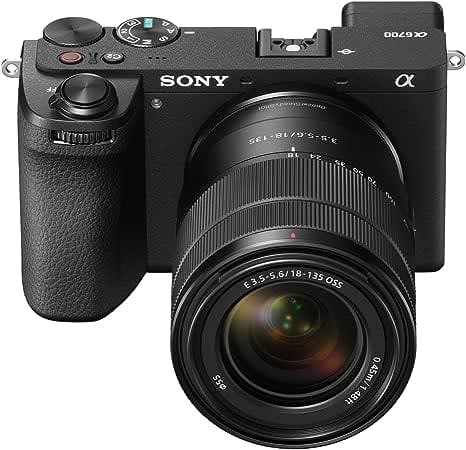
Sony a6700 Mirrorless Camera
Crop-Sensor Mirrorless Under $1500 with Kit Lens
This camera is best if you want something lightweight and you don’t mind the digital feel that Sony cameras have. This is a great hybrid camera which will allow you to take excellent photographs and videos. In addition, it has killer video features that make it easier for a beginner to nail focus and exposer. The Sony a6700 offers excellent image quality at a price that isn’t prohibitively expensive and in-body stabilization as well as Ai assisted continuous autofocus.
Best Choice: Action shooters, quality-focused vloggers, and travel video shooters
Panasonic Lumix G9 Mirrorless Camera with Accessories Kit
Crop-Sensor Micro Four Thirds Camera – Under $1000 for the Body
Panasonic is known for great video and photo products that help shooters get the imagery they need. This 21.77 Megapixel camera gives you Sensor-Shift, 5-Axis in-body stabilization in photo and video mode, and up to 60 fps continuous shooting with the electronic shutter function. This means you’ll be able to capture 60 still images in 1 second which is ideal for wildlife and sports photography. You also get a two SD card slots, an HDMI output for monitoring video externally (not micro like most cameras under $1000), and 4k 4:2:0 8-bit video at up to 60 fps. One down side is the 2x crop factor and the fact that you’ll need to spend another $1000 on a lens.
Best Choice: Photographers, particularly birders and sports shooters
Canon M50 Mark II with Kit Lens
Top Mirrorless Camera Under $600
This is the perfect gift camera for someone who is just starting out. If you’re buying a camera for a family member or partner but you don’t have unlimited budget, this is a good option. Likewise if you’re just starting out and testing the waters, this won’t break the bank. You’ll still get all the specs you need to take great shots and start learning your craft.
Best Choice: Any beginner shooter on a strict budget. You’ll still get great specs at a reasonable price.
Canon EOS R8 with Kit Lens
Top Full-Frame Mirrorless Under $1700 with Kit Lens
The Canon EOS R8 will give you outstanding image quality straight out of the camera. You’re going to be able to create gorgeous images with this camera thanks to the full-frame sensor and colour science. This camera has everything you need and more to get started. For video shooters you get 4K 10-bit internal video at up to 60 fps and Canon Log 3 for those who want to learn colour grading.
Best Choice: Creative photographers and cinematic video shooters
Best DSLR Cameras for Beginners
What’s the best DSLR camera for beginners?
I’m so glad you asked! In my opinion, the best DSLR camera for beginners is the Canon 90D.

Canon 90D
Top Crop-Sensor DSLR with 32.5 MP Sensor under $1600 with the Kit Lens
Whether you love photography and want the benefit of an optical viewfinder or you’re ready to increase the quality of your videos, this is a great starter camera. Get 4k video at up to 30 fps. For slow motion, you can shoot 1080p at up to 100 fps. Beautiful classic Canon skintones and 4:2:2 8-Bit via HDMI.
Best Choice: Best for photographers and video shooters who want a quality optical viewfinder and up to 4k video.
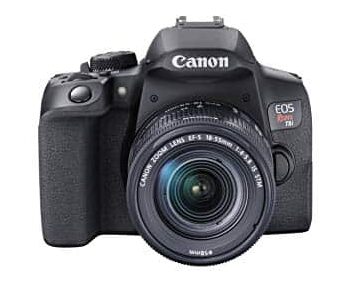
Canon Rebel T8i
Crop-Sensor DSLR with 25.8 MP Sensor for Under $900 with the Kit Lens [ Great Value Buy for Beginners on a Budget ]
The Canon Rebel T8i is part of a series of cameras that many shooters have used to transition from cellphone shooting to learning photography or videography. You get an image stabilized body for shooting video handheld as well as 4K at 24 fps. So beginner video shooters will be happy. For photography you get all the standard features you need to start honing your craft. Like all Canon cameras you have solid autofocus including automatic continuous-servo focusing for tracking moving subjects.
Best Choice: Any beginner shooter on a budget who wants the benefit of an optical viewfinder. Also good for vloggers and content creators.
Best Beginner Cameras for Video Creators
4 Best Beginner Cameras for Video | |||
Best All Around Camera for Photo & Video | Best for Action & Hybrid Shooters | Best for Classic Photo & Video Shooting | Best for Photo/Video of Wildlife & Sports |
Excellent 24.2 MP mirrorless with beautiful colour science for under $1600 with all the kit lens. | 26 MP mirrorless camera under $1700 with kit lens. Top feature is the eye auto focus. | 32 MP DSLR under $1700 with the kit lens. Top features is the 32.5 MP sensor. | 16 MP micro four thirds camera under $900 with the kit lens. Top feature is shooting stills at 40 fps with electronic shutter. |
OK, at this point I’ve covered what are the top beginner cameras for most people.
However, if you’re a devil’s-in-the-details kind of person, keep reading. I’m going to go over the key concepts to know when you’re buying a starter camera.
Understanding the Different Digital Cameras for Beginners
There are three different types of cameras that are good for beginners to use when just starting out:
1) DSLR
2) Mirrorless Camera
3) Compact Camera i.e. Point and Shoot
What’s important to understand is that all of these choices are digital, and all have their own unique pros and cons.
My goal is to help you choose what’s right for you or your loved one. You might be buying a camera for you partner or kid. Or you might be purchasing for yourself.
Either way, you need to know what your budget is and the overall purpose or likely use of the camera will be.
So before you do anything else, think for a moment about all the different ways you’d like to use this camera. Then dig into our research and recommendations.
And just remember, that the camera you buy today won’t be your “forever” camera.
But it should last you at least 2 years as you get started building your skills as a photographer, video shooter, or solo filmmaker.
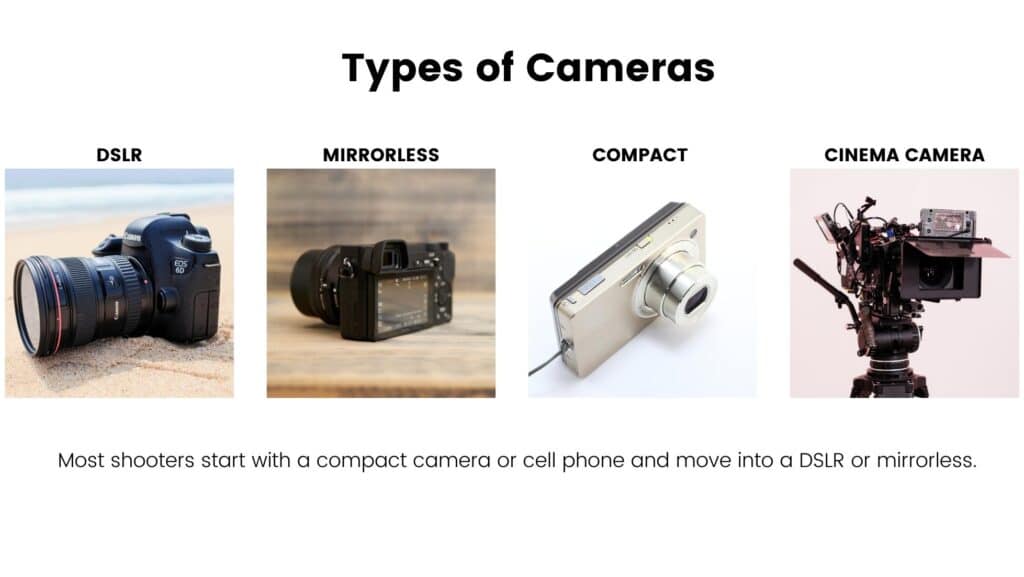
Which Tech Specs Matter for Starter Cameras?
First, it’s important to note that these are just the tech specs that matter for beginners.
When you’re more advanced, there’s A LOT more to think about and consider. But when you’re starting out, the point is to just GET a camera, so you can start messing around and having fun. You’re not aiming for perfect. You’re aiming to get in the game.
Okay, disclaimer over—these are the tech specs to consider:
Sensor Size
There are crop-sensor cameras and full-frame cameras.
Typically full-frame cameras cost more, so as a beginner you’re typically going to by an APS-C sensor camera body which gives you great quality but costs less. The sensor size does affect the image quality, but not by much. So don’t even bother worrying about this. The main thing a crop-sensor camera does is that it crops the field of view.
Let me explain!
Imagine you’re taking a picture of a landscape with a friend, and you are both standing at the exact same location and you both use the same focal length. However, they’re using a full-frame camera and you’re using a crop-sensor camera. Your image won’t be as wide as theirs due to the size of your sensor.
Honestly, as a beginner, you don’t need to worry about this.
You’ll most likely buy a crop-sensor camera. And it won’t affect your image quality in a manner that’s noticeable.
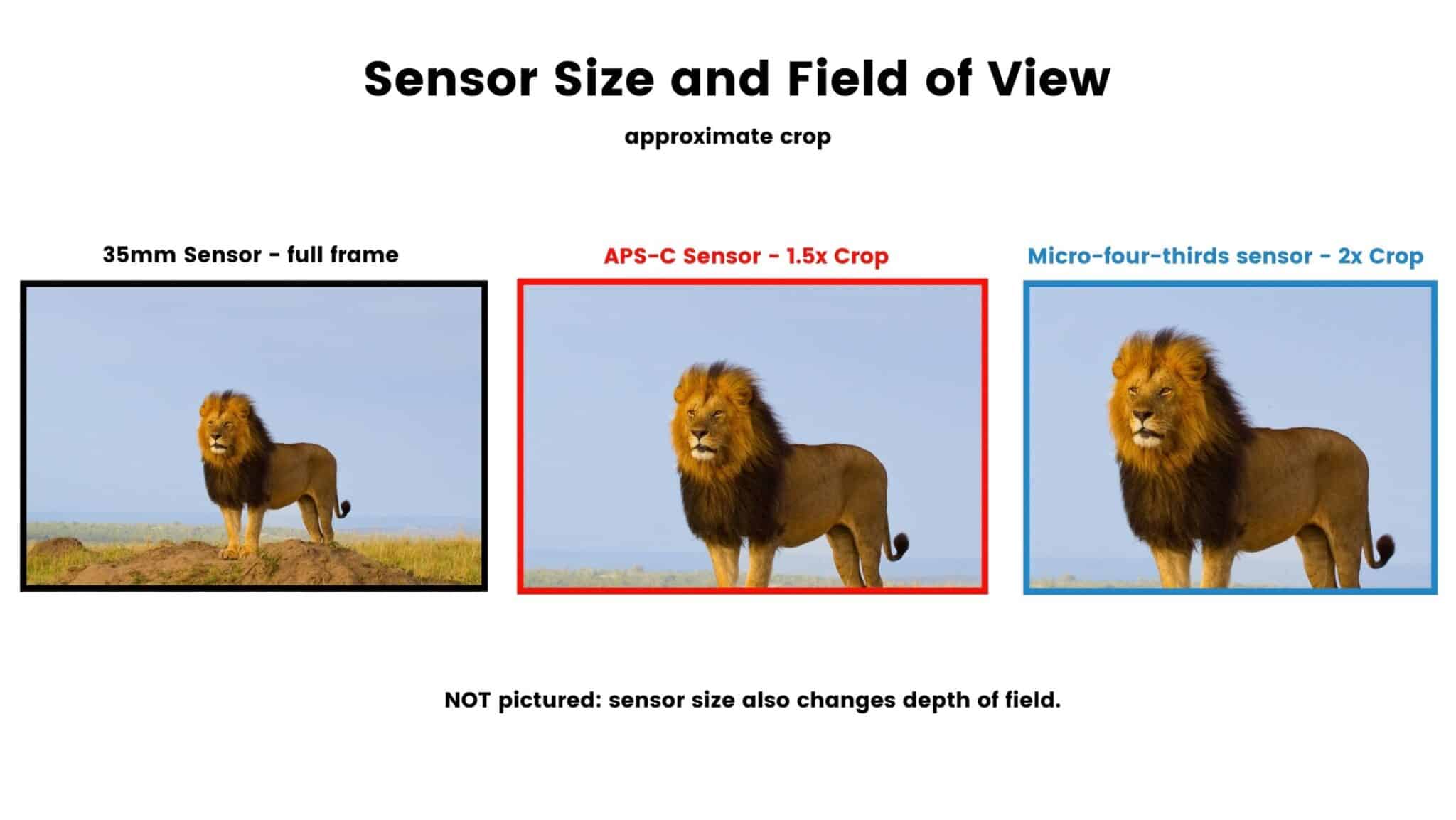
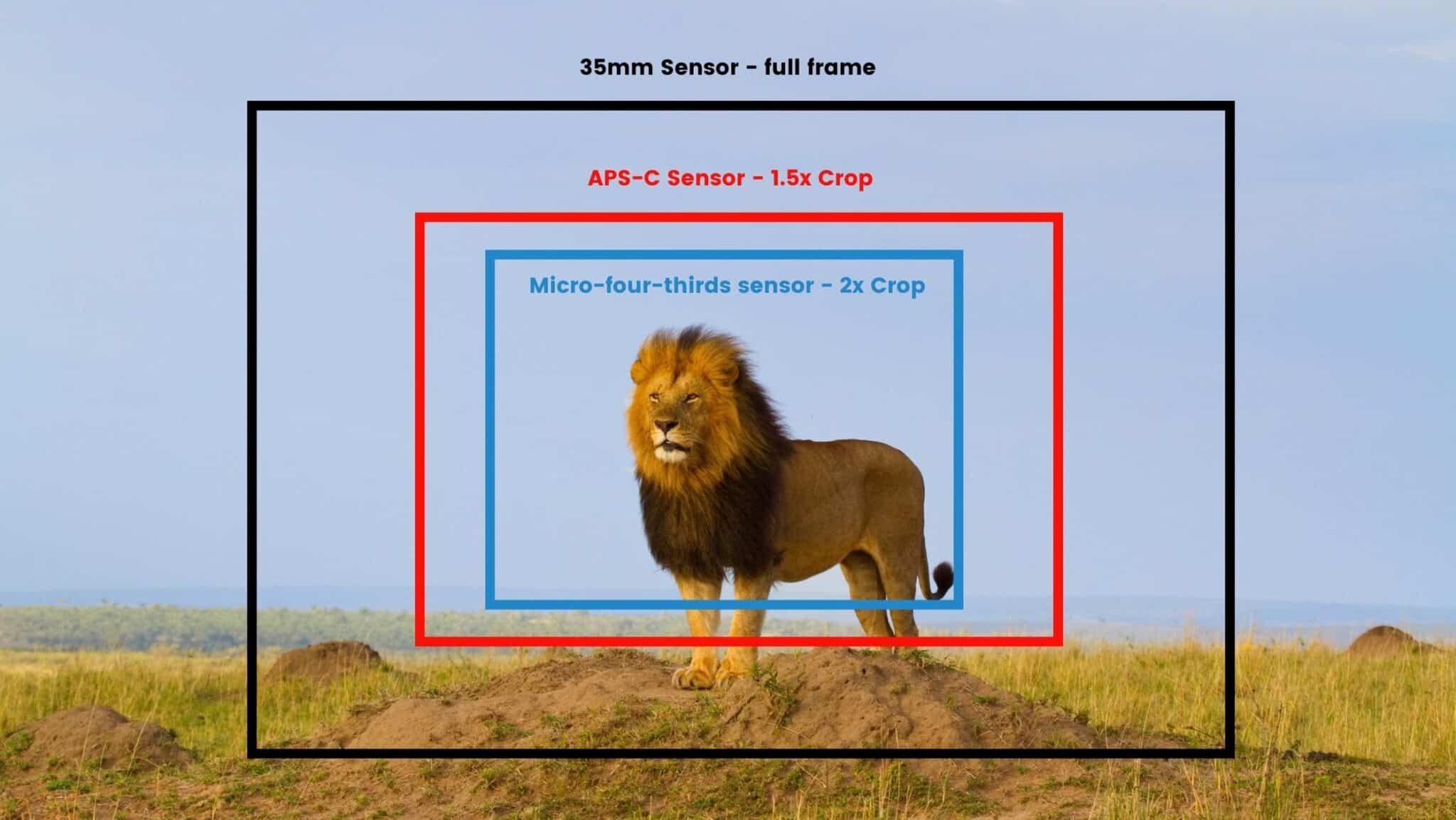
Max Video Resolution and Frame Rate
If you’re shooting video, then you’ll want to get a camera with 4k video.
If you need to do slow motion in 4k, then you’ll need to buy a camera that does 60fps at 4k. You don’t need 8k, so don’t worry about that. FPS stands for frames per second and when you want to do a slow motion video, it’s best to use a higher frame rate so that your slow motion is smooth in post. As a beginner you don’t need more that 4k at 60fps.
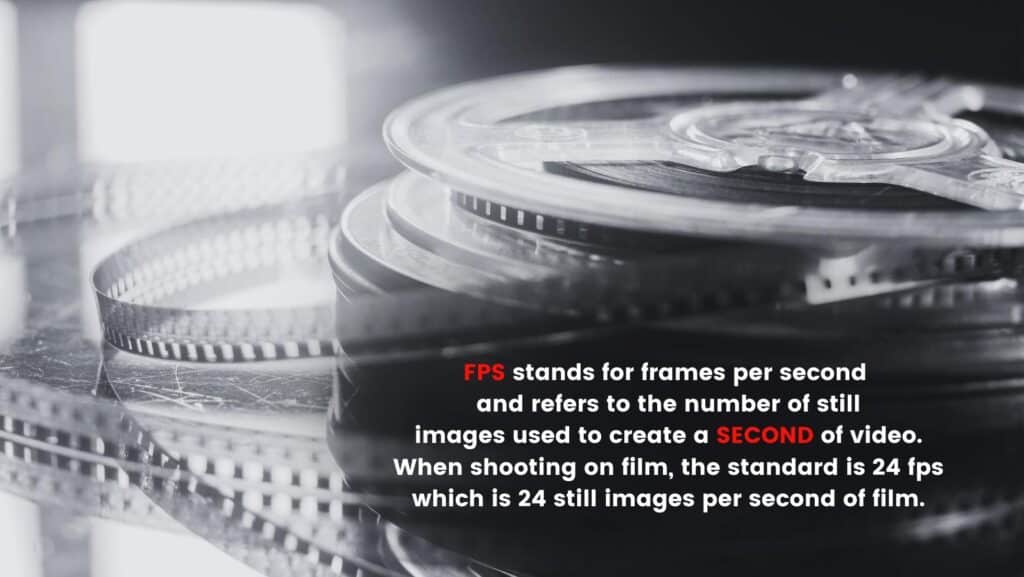
Image Quality: Bit Depth, Dynamic Range
There are two things that affect image quality more than your sensor size: bit depth and dynamic range.
Most entry-level cameras don’t offer exceptional bit depth or dynamic range. However, it’s worth comparing these specs because in the $1000-$2000 range, you do see some important differences between cameras. And if you’re planning on spending $3000 or more, then get a camera with 10-bit video and 12 or more stops of dynamic range. If you’re spending under $2000, don’t worry about this.
BIT DEPTH
Bit depth is like the colour palette for your images.
If your camera offers 10-bit video, that means “you’ll then be recording 1024 levels of color in each channel and this means the potential for just over a billion different colors.” While with 8-bit video you’ll be recording footage with 256 levels of each colour giving you a potential of more than 16.7 million colours.
When it comes to photography, it’s more of a level playing field in terms of bit depth.
JPEGs are all recorded in 8-bit colour while most cameras offer camera raw with 12-bit or 14-bit colour. The Canon 90D offers 14-Bit camera RAW for stills but only 8 bit video.
While the Canon R8 offers 14-bit stills and up to 10-bit video (which is outstanding). Likewise the Sony a6700 offers 14-bit stills and 10-bit video.
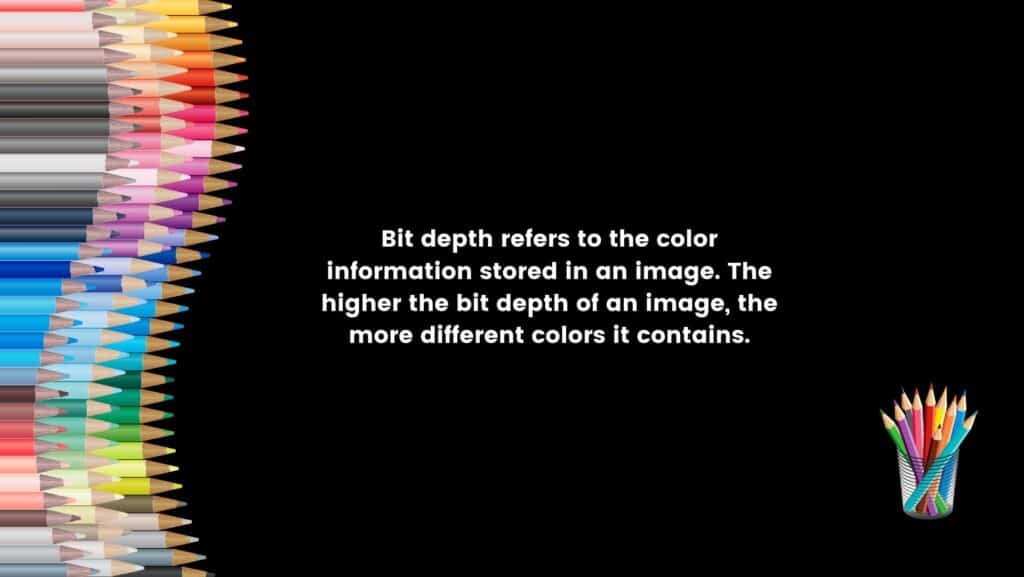
DYNAMIC RANGE
Dynamic range is what any true cinematographer or pro photographer cares about a lot.
If your camera offers high dynamic range, it’s able to capture a wide range of shadows, mid-tones, and highlights while maintaining key details. An image with very bright highlights and deep dark shadows, won’t be captured effectively with a camera with low dynamic range. You’ll have to expose for the subject and lose some (or a lot!) of the detail in your highlights and shadows. ( + )
Unfortunately, most entry-level cameras don’t have good dynamic range capabilities.
This is partially because it’s expensive to implement. It’s also because beginners don’t tend to notice the dynamic range issues they’re facing because they’re just learning about photography or video. However, if you’ve got a big budget for your beginner camera, then I say, spend it! Because then you’ll be able to get a camera with great dynamic range and you won’t have to upgrade in two years.
The Sony a6700 offers 14-stops of dynamic range in photos as well as S-Log video.
While the Canon R8 has been tested and shown to achieve “a maximum of nearly 15 stops (14.7 EV) at base sensitivity (ISO 100).” ( + + )
But, if you’re a normal person with an average budget, you’ll typically have to sacrifice dynamic range in order to get a camera that you can afford when just starting out.
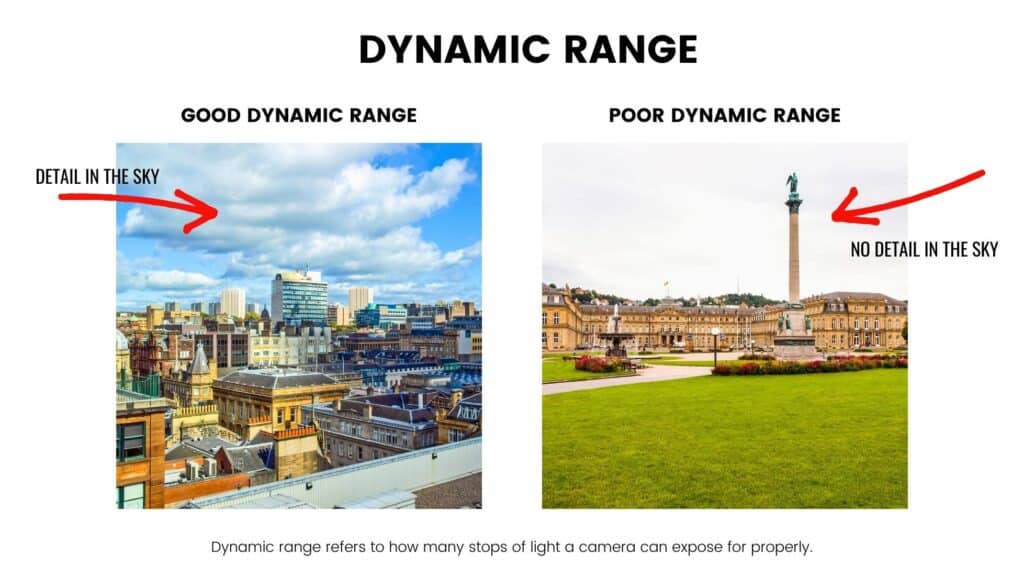
CROP FACTOR
Most entry-level camera have APS-C sensors with a crop-fact of 1.5x or 1.6x.
This simply means that if you were shooting side-by-side with a full-frame camera (i.e. with a full-sized sensor) using the exact same focal length, your crop-sensor images wouldn’t have as wide an angle of view as the full-frame ones. In other words, they’d be cropped (zoomed in, if you will).
This is no big deal, so don’t worry about it. However, it does affect the lens you’re going to buy. So when you get to the point where you buy your first “fancy” lens, make sure you consider your crop factor.
Interchangeable Lens vs. Fixed lens
DSLRs and mirrorless cameras are interchangeable lens cameras.
They have a lens mount, and you can take the lens off and on and switch it up. You can even buy a lens adaptor to add other 3rd party camera lenses to your camera.
While a compact point and shoot camera has a fixed lens which cannot be removed from the camera. Point and shoot cameras are good for quick pictures and videos, but not a great option for someone who wants to do high-end photography or video.
That said, Casey Neistat swears by his Canon Powershot, and brings it everywhere. It’s also the camera that I started out using in 2007. And it’s dirt cheap!
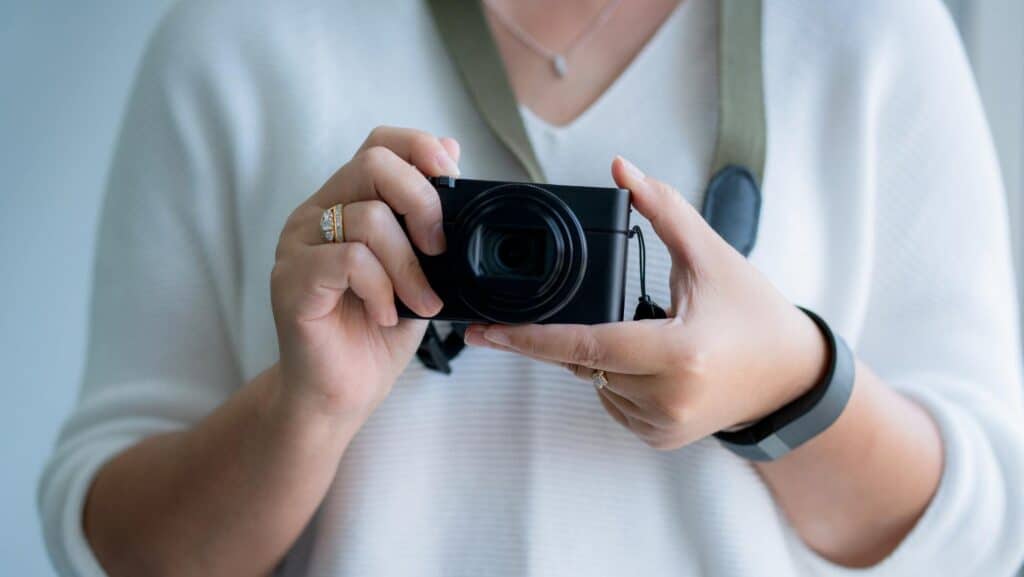
Electronic Viewfinder vs. Optical Viewfinder
With an electronic viewfinder you’re not looking at “real life,” when you look through the little hole above your LCD screen.
Instead, you’re looking at an electronic rendering of the image. I’m not the biggest fan of EVF. I’d rather look at the Live View on the LCD screen or use a real optical viewfinder where I can see real life with my exposure information as an overlay. But that’s personal preference. I also find EVF is a little harder on the eyes if you’re using at all the time. But not everyone is 900-years-old like me.
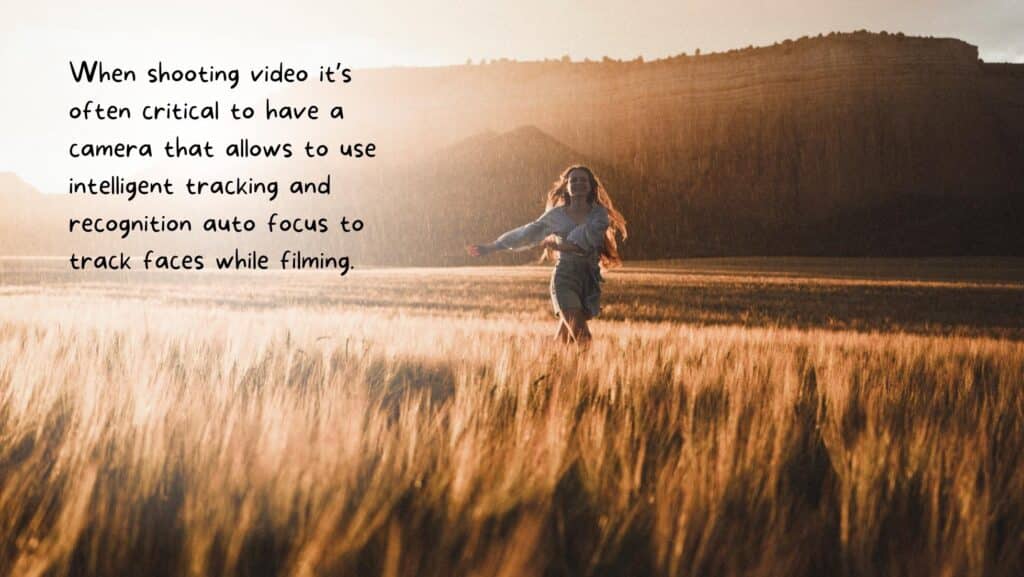
Autofocus System and Follow-Focus or Tracking
Autofocus matters for both photographers and video creators.
Most cameras have good autofocus systems; however, Canon is still widely accepted has having the best autofocus system in general with Sony coming in a close second.
Some cameras have autofocus that can track a human (or animal) eye or face in both photo and video mode as long as there is sufficient light. So if that’s something you need, make sure you check the specs before you buy. All the cameras I’m recommending on this page have good autofocus systems.
In-Body Stabilization
In-body image stabilization i.e. IBIS is a big deal. And there are now a couple cameras with 5-axis in-body image stabilization (IBIS) coming in at under $1000, which, frankly is crazy.
But who exactly needs this and what does it do?
Cameras with 5-axis image stabilization have a built-in gyroscopes that provide stabilization along five axes: yaw, pitch, roll, horizontal and vertical. Which makes it kind of like having a low-key, much less powerful gimbal INSIDE your camera. Meanwhile cameras with with 3-axis IBIS work with Pitch, Yaw, and Tilt only. ( + )
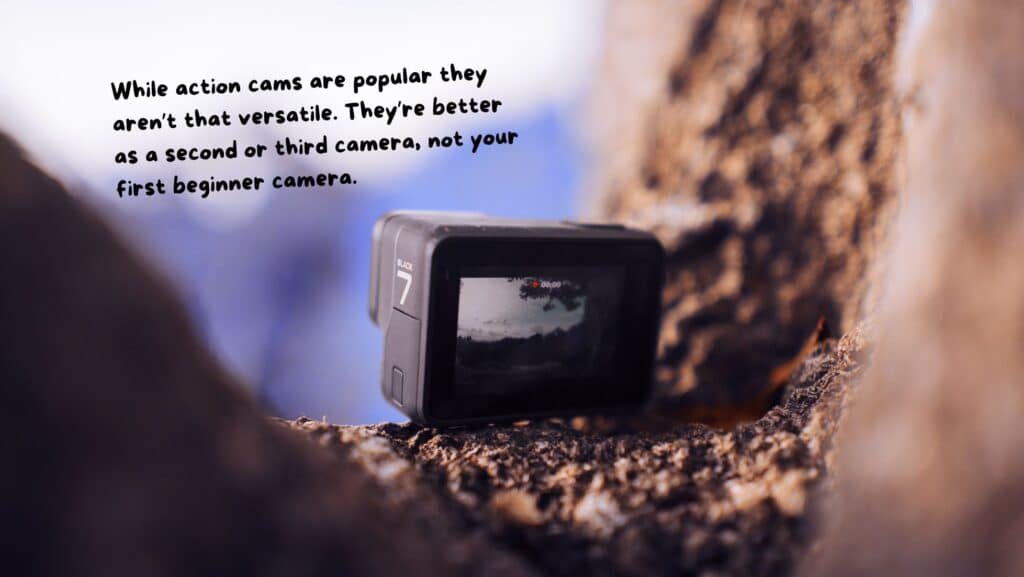
But how does IBIS work?
Basically there’s a sensor inside the camera body that’s able to detect camera shake. If you’re walking your camera is shaking up and down.
If you’ve had too much caffeine, it might be shaking all over the place. The gyroscopic sensor is able to detect the camera shake and then move the sensor in the opposite direction in order to compensate and minimize shake in your videos. However, if you use a 3rd party lens with your IBIS camera body, you might not be getting the full power of your camera’s IBIS. So keep that in mind when lens shopping.
This is also probably why Canon isn’t supporting 3rd party lenses in their mirrorless cameras.
I’m guessing that they don’t want 3rd party lenses mucking up their in-body stabilization or autofocus system.
Advanced Features like Focus Peaking, Zebras, and False Colour
Not all cameras have focus peaking, zebras and false colour. But these three things are damn helpful, especially to video creators. Most mirrorless cameras and all cinema cameras do have these three features. However, many DSLRs do not.
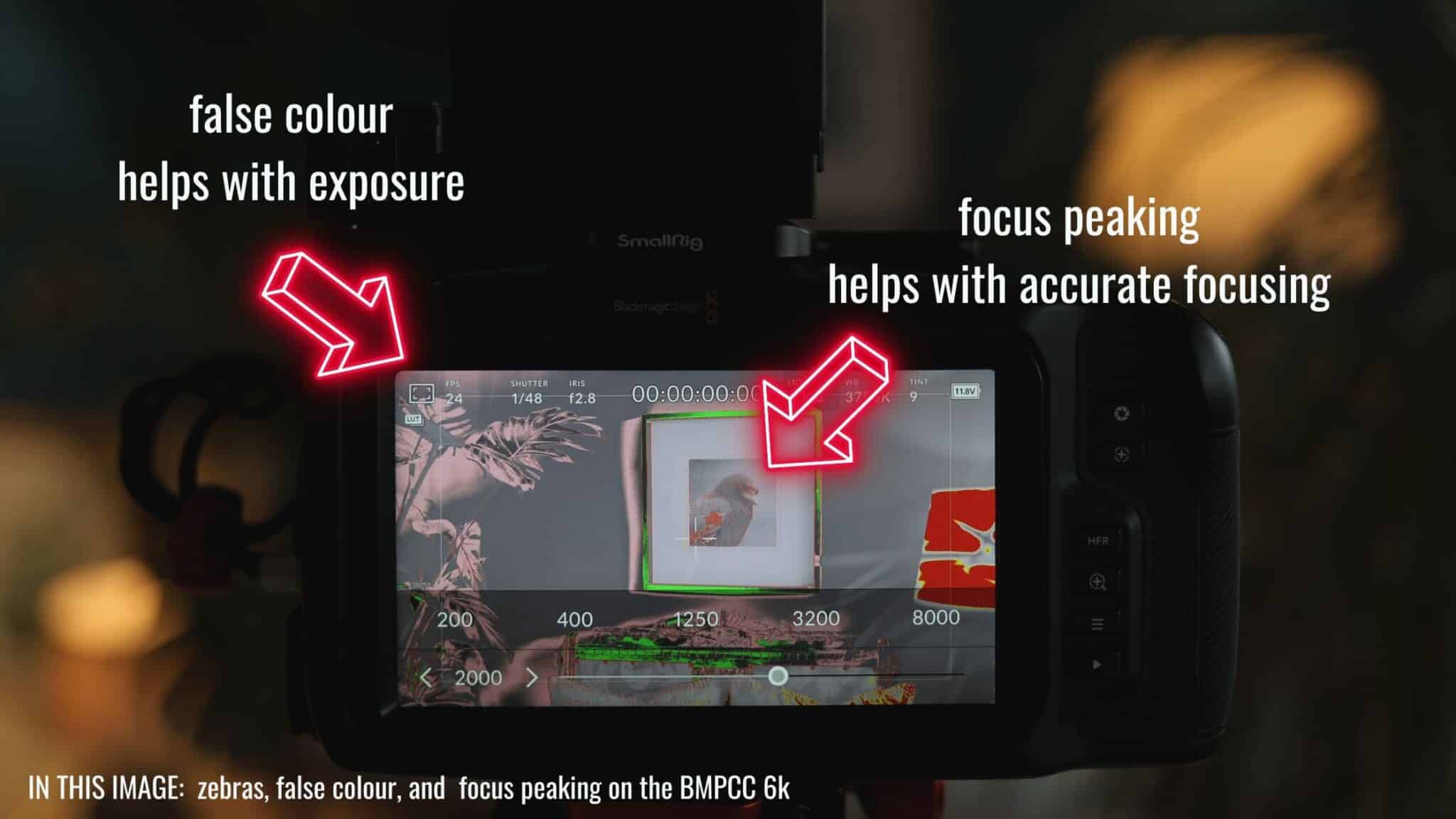
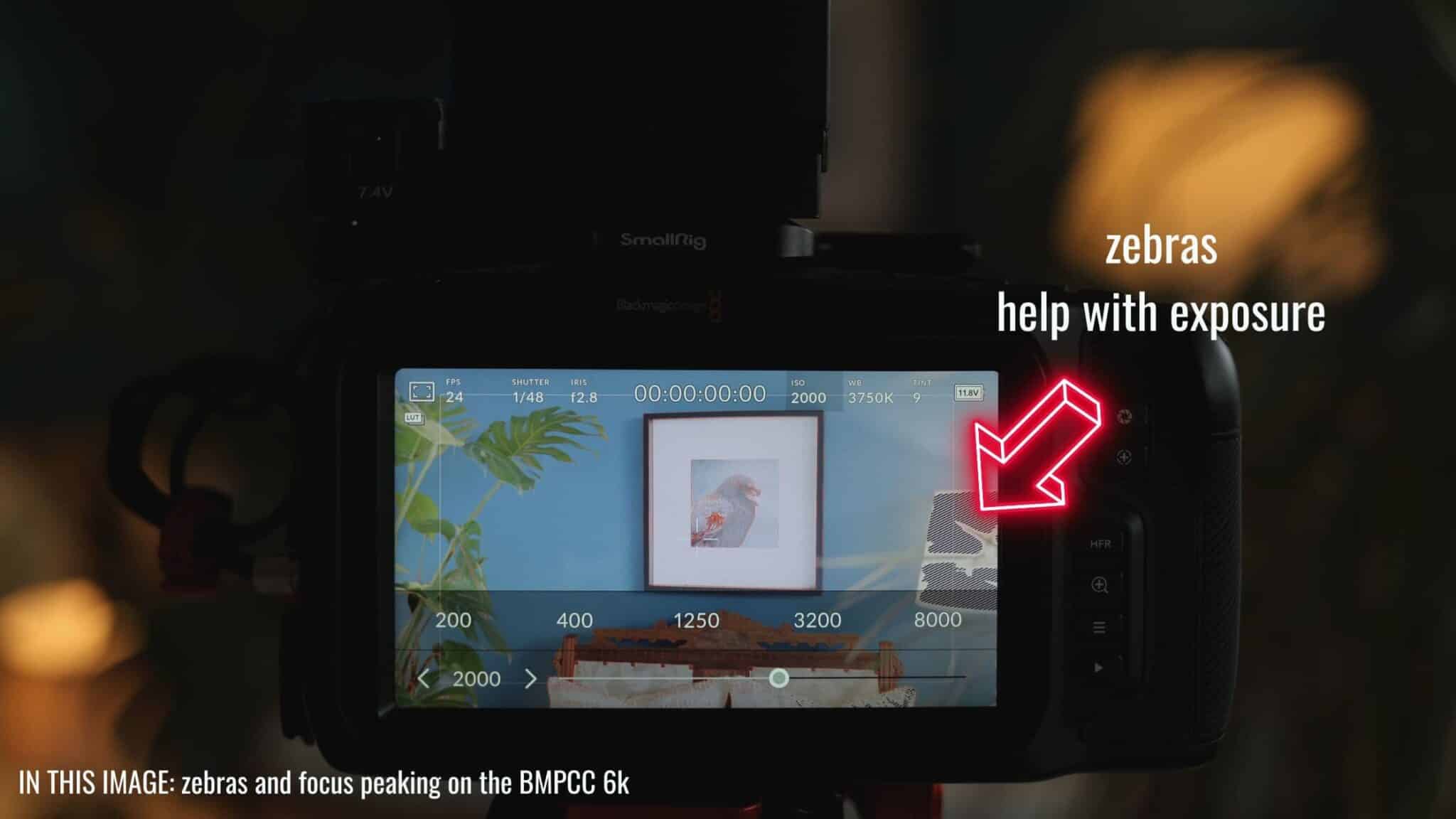
FOCUS PEAKING
Focus peaking allows you to overlay coloured pixels onto your EVF or Live Screen so that you can see what’s in focus. This is helpful for beginners who often take some time to learn how to nail focus. But also most pros expect their high-end cameras to have focus peaking and use it constantly. As a video shooter, I wouldn’t buy a camera without focus peaking at this stage in the game.
ZEBRAS
Zebras allows you to overlay stripes on the areas of your image that are overexposed, so that you can ensure you’re not messing up exposure. In some cases, you can also use zebras to show you what’s under exposed. This is extremely helpful for video shooters.
FALSE COLOUR
False colour is a brilliant exposure tool for video shooters that allows you to get your skin tones just right. With false colour you can also more easily make sure you’re not overexposing shiny areas on your subject’s face like the forehead and chin, which is a common issue in videography.
Style of LCD Screen – Touch, Swivel, Tilt
These days, it’s just annoying to buy a camera that doesn’t have a touch screen.
I recently got a Sony compact camera for use on a trip to South America. I was surprised (and annoyed!) to discover that it didn’t have a touch screen. Make sure your camera has a touch screen!
I mean, just UGH, who wants to ENTER a camera menu manually in 2023!?!
Next, the most useful type of screen is a vari-angle screen that can be angled in a multitude of directions include swivelling it so you can look at it if you’re vlogging. Meanwhile, tilt screens are still common, but they are not as useful.
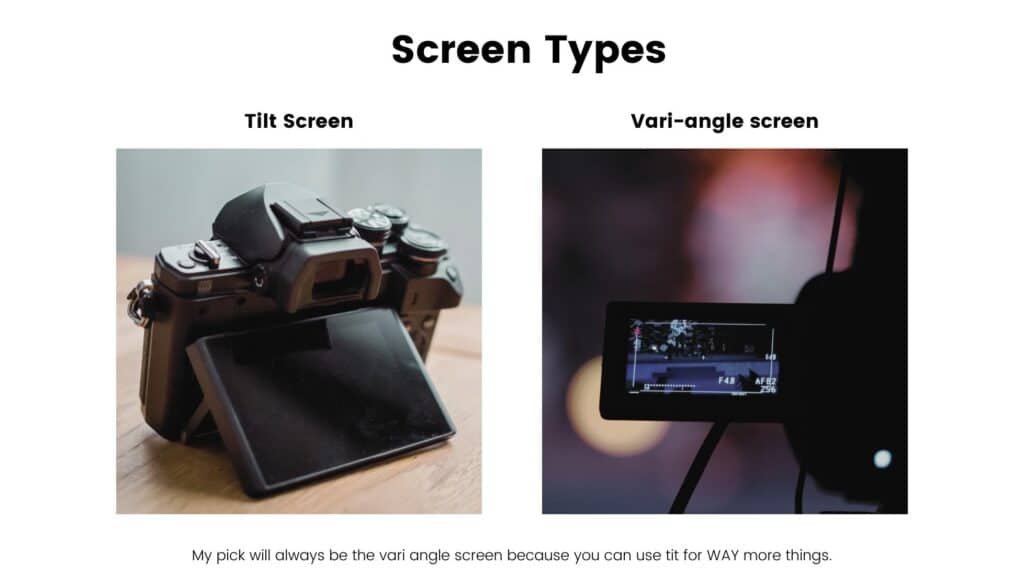
Low-light Capacity
Will you be shooting a lot at night or indoors without studio lights?
In which case, you’ll want a camera that has good low-light capacity as well as a fast lens. But to be fair, you won’t get this for under $2000. And for your camera to handle low light, you need to also have a lens that’s got a maximum fixed aperture of f/2.8.
Camera Body vs. Camera Lens
Your camera lens is just as important as your camera body.
Some people say it’s more important. But when you’re just starting out you usually have to make compromises. First, focus on getting a good camera body and kit lens that’s in your budget. Then when you’re ready, upgrade your lens. Doing this will often double your image quality as the lens make a huge difference to your image quality. The typical beginner’s camera doesn’t come with a killer lens. But that’s okay! Remember, you’re just getting started.
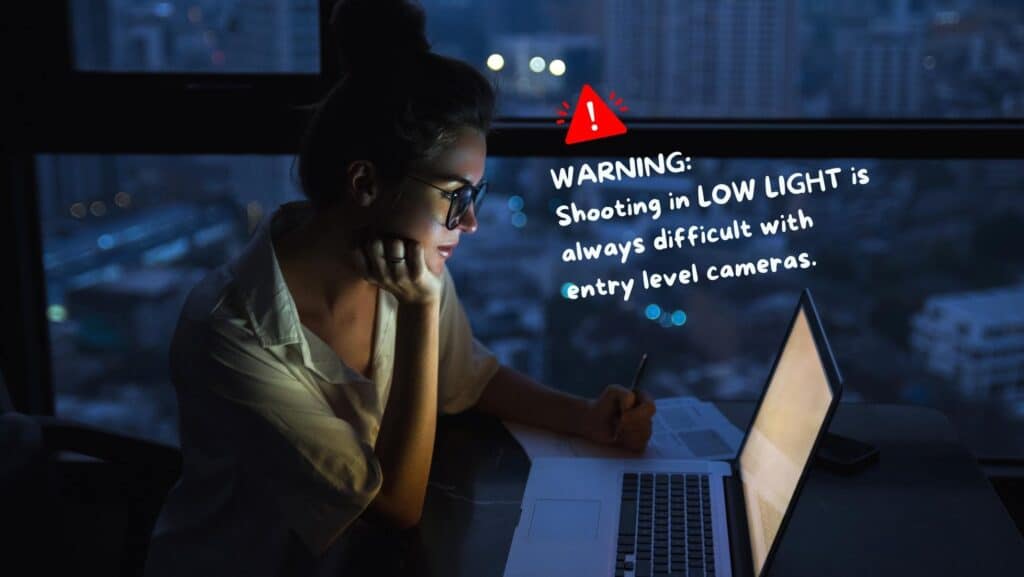
How Do We Decide What’s the Best Camera for Beginners?
Well, first of all, we don’t decide.
I’m a professional video producer, creator, solo filmmaker and photographer. And I also teach solo filmmaking. But I know that everyone is different. My biases don’t necessarily serve your needs.
So, here’s what we do:
We (myself and a tiny team) do the research and gather the information you need to make a decision. Then I present it to you, so that you can decide what’s right for YOU. Every beginner camera on the market today will “do the job.” They’ll all capture decent imagery.
However, it’s important to know what you want.
Within each camera brand, you’ll find the three main camera types and multiple options to choose from. But it’s not as complicated as it seems. When you compare camera specs with what you want to do with your camera, it’s not hard to see which are your top options.
From there, pick the options that fit your budget.
Then pick the camera that has the features and aesthetic that gets you most pumped about shooting! At the end of the day, there’s one important rule when buying a camera: ONLY buy gear that excites you! Once you find the camera that sparks your imagination and fits your budget, you’re ready to buy!
Best Compact Cameras for Beginners
Compact cameras are good for beginners who want to have a point-and-shoot camera outside of their phone.
Sometimes you just want to grab a photo that isn’t ultra complicated. These days there are a range of compact cameras across the price spectrum. Compact cameras can be used by vloggers as well as for street photography.
What makes something a compact camera?
Well, in short, they don’t have interchangeable lenses. A compact camera’s lens is part of the camera body. And usually the camera is small enough to fit in your pocket.
Best Compact Cameras | |||
The Perfect Travel and Walkabout Camera | Best Compact Camera on a Budget | Best for Vlogging on the DL | Top Quality Travel Photography |
For quality within the context of a compact camera, you can't beat FUJIFILM. Get a 26.1MP camera that can shoot 14-bit stills at up to 11 fps at 26.1 MP for up to 17 Frames in Raw. 4k video. Fixed focal length equivalent to 35mm but with digital zoom option. Tilting touchscreen and ability to get shallow depth of field with f/2.0. Under $1400. [Frequently on backorder.] | For the price, this is the best compact camera. Get a 21.1 MP camera with a 35mm equivalent lens plus 40x optical zoom. Variable max aperture of f/3.3 to 6.9 means you won't always be able to get shallow depth of field. 80° Tilting LCD - it's not a touchscreen. Capture 4k video at up to 30 fps and 1080p at up to 60 fps. Built in flash for low-light casual shots. For under $500. | This is the ultimate mini vlogging camera. It's literally made ONLY for walkabout vloggers, so don't buy this for photography. It supports stills but isn't made for that. Good in-camera audio and the ability to press record from the front of the camera while viewing yourself in the frame. Shoot 4k in up to 30 fps. Plus capture the scene behind you with the wide angle lens. Comes in under $450. | If you have budget to spare and just want the best damn compact on the market for photography, THIS is for you. Get a whopping 43.6 MP full-frame sensor on a compact camera that weighs 1.1 lbs. The max aperture of f/2.0 allows you to get shallow depth of field like a pro. Not for video shooters but you can grab 1080p video in a pinch. Premium quality 35mm Zeiss glass. Not for buyers on a budget. |
Best Cinema Camera for Beginners
Cinema cameras are typically not a great option for beginners.
They aren’t good starter cameras because it takes so much work to learn how to use them, that for many new filmmakers or video creators, it could be frustrating. Think of it this way: when you learn to ride a bike, you usually start with a tricycle and then training wheels. Starting with a cinema camera is like turning 10, skipping the bike altogether and trying to teach yourself how to drive a Ferrari instead.
In other words, the odds are against you.
But if you really want to do this: start with a Blackmagic Pocket Cinema Camera. Go with the 6k not the 4k because you’ll have more lens options. If you get a Canon EF lens with your BMPCC6k, you can use it on a Canon DSLR as well.
Blackmagic Pocket Cinema Camera 6k | |
Best Cinema Camera for Beginners | |
Sensor Size: 21.2 MP | Mount: EF | 23.1 x 12.99 mm (Super35) CMOS | |
What We Love: ✓ This camera gives you absolutely stunning image quality for a price that’s beyond reasonable. The dynamic range on this camera is fantastic at 13 stops. You’ll rarely run into exposure problems. The colour science is on point. The ability to shoot in 4k and 6k is useful. Shoot in ProRes 422 at up to 60 fps. I have this camera, and it has never let me down. For cinematography on a budget this is THE camera. | Downsides: ✘ This is absolute not a beginner camera. So you should only buy it if you’re ready to go all in and start learning cinematography on day 1. It’s not for photography though it does have an option to shot stills. |
Who It’s For: This camera is for beginner cinematographers and pro video shooters who want an affordable camera that gives you outstanding image quality with high dynamic range. | |
Best Vlogging Camera for Beginners
As it stands, I have two recommendations for vlogging, and they aren’t the lower cost cameras that are being pushed at vloggers.
I recommend the Canon R8 or the Sony a6700 for vloggers. If you’re really serious about starting a YouTube channel, then just buy a decent camera straight out of the gate. You will not regret it. It will be way easier for you to capture high-quality video and you won’t be struggling with less-then-stellar footage. Well, you will. But it will be due to user error not because your camera is a living nightmare!
The compact cameras that are being touted for vlogging are actually not that easy to use for anything other than walk-and-talk direct address filming.
So if you’re planning on doing sit-down vlogging and adding beautiful b-roll to your videos, get a good mirrorless with decent lens, and make your life a hell of a lot easier!
Quick Review of the Sony ZV-1 II Vlogging Camera
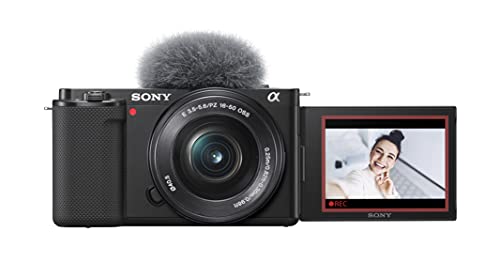
I have this camera, and based on using it on a few different trips, I’d only recommend this for a couple types of shooters.
If you’re almost exclusively going to be doing self-videos, this will work great. If you also want to do some basic photography, but you don’t want to go back and forth between photo and video, this will be fine. The internal audio on this camera is crazy good, which is why this camera is great for walk-and-talk vlogging.
But the MAJOR downside of this camera is that it does not have a touch screen, it’s super annoying trying to go back and forth between photography and video mode, and the menu is NOT intuitive.
Not only that when you’re using the autofocus for anything other than tracking your own face, it lets you down rather frequently.
So, I highly recommend this camera for the vloggers who will be doing walk-and-talk adventure shooting, but not anybody else. And this is absolute NOT a hybrid camera, so don’t get it if you want to quickly jump from photo to video. Again, this is great for vloggers who want an easy, quality audio solution.
Check Best Price ➩
Best Cameras for Film Students
Any of the camera’s I’ve recommended so far would be great for film students EXCEPT a compact point-and-shoot camera.
You don’t need a cinema camera for film school, unless your school indicates that you must. Instead, you should think about what kind of shooting you’re going to do and choose the right camera based on your aesthetic preferences.
You’ll probably be happiest with the Canon R8 or the Sony a6700 in terms of budget and flexibility.
If you have a smaller budget, then the Canon R50 is a good option because it gives you very solid specs and superior colour science when compared to cameras of a similar price.
Best Beginner Camera for Low-Light Video
When it comes to shooting in low light, it’s not just about the camera.
You also need a good lens. Either the Canon R8 or the Sony a6700 will be good in low light as long as you have a lens with a fixed maximum aperture of f/2.8. This means, if you must have a great set up for low-light i.e. shooting at night or indoors without additional lighting, you’ll need to by a premium lens rather than the kit lens. If you’re in this situation, then read my blog post about the best lenses for video. It’ll walk you through everything you need to know to get a premium lens.
Major Problems (and Tips) that Beginner’s Should Know
1 – Consider battery life in beginner-friendly cameras. Some cameras run through batteries super fast, while others are reasonable. No matter what, have 2-3 batteries for your camera. And when you go out in the field, bring all your batteries fully charged.
2 – LCD screens are super hard to see when the light is bright. If you get a DSLR and shoot a lot of video, you’ll need a lens hood or Kinotech magnifying eye piece.
3 – It can be really hard to get your image in focus when just starting out. Focus peaking helps.
4 – Not all cameras have good follow focus and most cannot easily and cleanly follow a moving subject.
5 – Most starter cameras are super wobbly when you do handheld video, so getting a tripod, monopod, or Gorillapod is often a must. If you get a camera with IBIS, then you should still get a tripod. But you’ll be able to pull off handheld more easily.
6 – You’ll run out of space on your SD card very fast, so make sure you get more than one SD card. And also ensure you have an external hard drive so you can have one copy of your files on your computer and the other copy on a hard drive. Always have 2 copies of your work (or more).
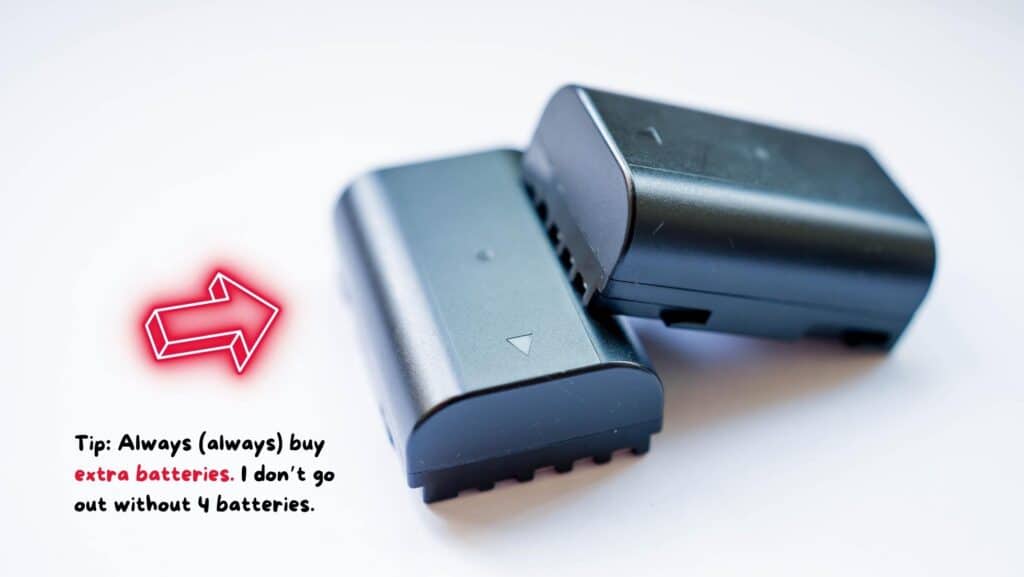
Navigating Camera Settings as a New Photographer or Video Shooter
There are three main camera settings that beginner photographers must understand.
For video shooters, there is one extra camera setting that’s critical. All beginner cameras have these settings, which means everyone must understand what they are and how to use them.
Let’s go over them!
ISO
ISO is the setting on your camera that allows you to set the light sensitivity of the camera sensor.
If you want your camera to be more sensitive to light because you’re in a low-light situation, then you increase your ISO.
Shutter Speed
Shutter speed refers to how fast the shutter (window) inside your camera body, which is in front of the sensor, opens and closes.
For photography, you’ll set your shutter higher if you want to freeze action. But if you want to blur motion, then you’ll have a slow shutter speed. Shutter speed is written in fractions, and you typically need to set your shutter speed to double your focal length if you’re capturing stills without a tripod.
However, for video shooters you have to just double your frame rate to get the appropriate shutter speed.
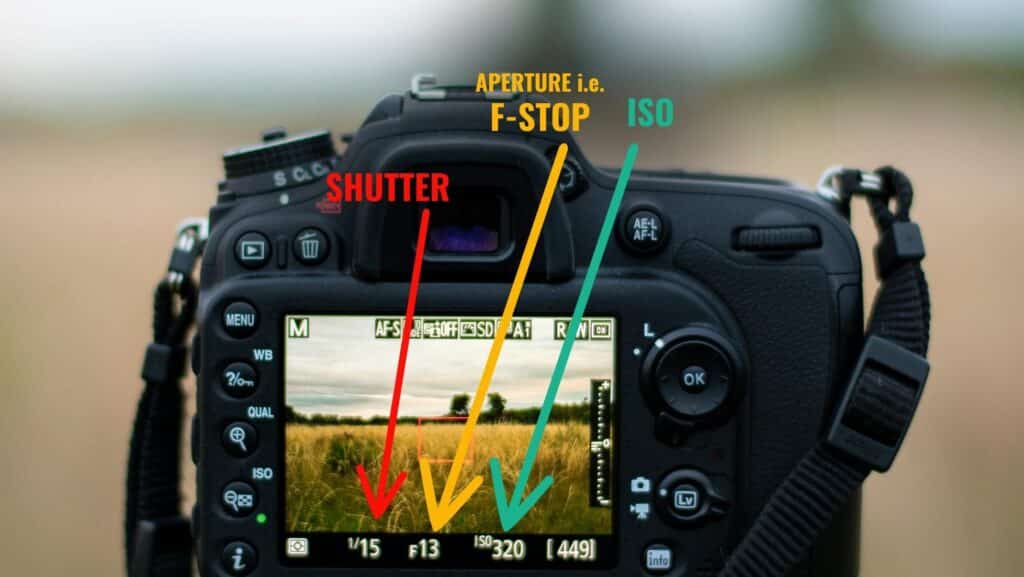
Aperture
Aperture refers to the opening inside your lens that allows light to enter.
When you open up the aperture, you let more light into the camera. Unless, of course, you also increase your shutter speed. The aperture is also called the iris. It’s measure in f numbers, which are also called stops. You’ll see f numbers written like this: f/2.8, f/4.0, etc. The lower the number the more light you’re letting into the camera.
Frame Rate
Finally, frame rate is only important for video shooters. For a filmic look, set your frame rate to 24fps or similar.
For a “video” look set it to 30fps. For slow motion set it to 60fps or higher. Frames per second refers to the number of INDIVIDUAL photos that are strung together to create 1 second of footage.
Summary of Key Points:
- For beginners a DSLR or mirrorless camera with a crop sensor is often best.
- Canon and Sony both make great beginner cameras.
- The Canon 90D and Rebel T8i are two good beginner DSLRs.
- Remember that a cinema camera is not a beginner camera. They’re complicated!
- Any Sony or Canon mirrorless camera within your budget will be a good fit for beginners.
What’s Next?
So, are you ready? It’s time to make a decision! If you know what camera you’d like to buy, go for it! The longer you wait, the further you are from getting out into the world and learning how to use your camera.
And remember, this is just your FIRST camera. There will be more cameras, I promise you that!
More Gear Articles
⭐ How to Store Your Filmmaking Gear
⭐ The Best Lens for Video Hands Down
⭐ Lens Mount Guide for Cameras
Learn Filmmaking and Get the Gear Guide
If you’re interested in learning filmmaking, check out the Solo Filmmaking Mentorship Program I created for aspiring filmmakers and video creators. It usually goes live once per year. So I recommend getting the Story Envelope Filmmaking letter which comes out a couple of times per month. That way, you can get filmmaking tips for free and find out when the filmmaking course is going live again.
Also, before you go, grab the Solo Filmmaking Gear Guide and Checklist for Beginners >>>

About the Author
Hi! I’m Colette Nichol. I’m a solo filmmaker and story strategist based out of rainy Vancouver, Canada. I’ve been making videos and micro films for small businesses and global brands since 2014.
Plus, I LOVE to help aspiring filmmakers pursue their dreams and start making films. This blog is designed to help you gain the knowledge you need to become a filmmaker.
If you want more, get on the waitlist for the Story Envelope Academy Solo Filmmaking Mentorship Program. It opens up one time per year and is the best way to become a filmmaking or video pro fast!
CLICK HERE to get on the solo filmmaking mentorship waitlist.
